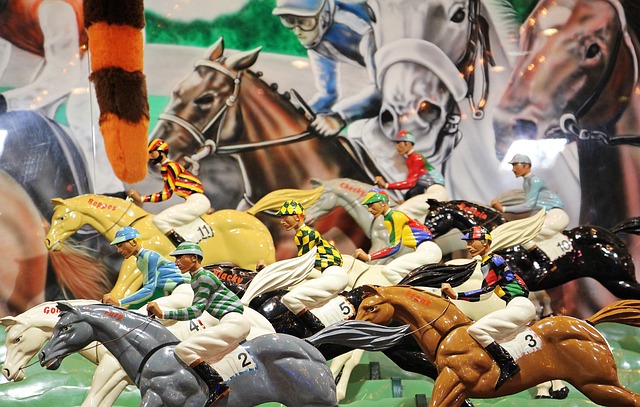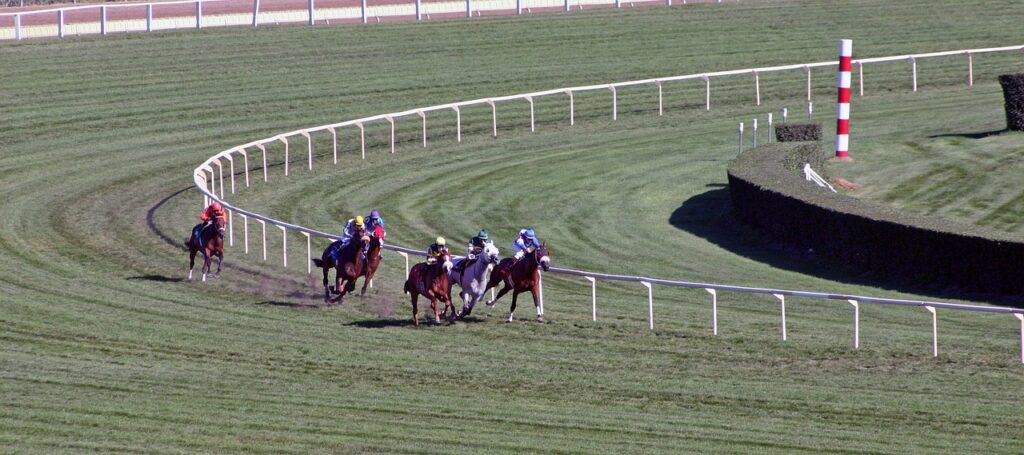Minella Times
 Owned by J.P. McManus and trained by Henry de Bromhead in Knockeen, Co. Waterford, Minella Times was retired from racing in February 2023, having won four of his 24 races under National Hunt Rules and just shy of £500,000 in prize money. However, he will always be best remembered for his historic victory in the 2021 Grand National, which was worth £375,000 to the winner but, more importantly, made Rachael Blackmore the first female jockey in history to win the internationally renowned steeplechase.
Owned by J.P. McManus and trained by Henry de Bromhead in Knockeen, Co. Waterford, Minella Times was retired from racing in February 2023, having won four of his 24 races under National Hunt Rules and just shy of £500,000 in prize money. However, he will always be best remembered for his historic victory in the 2021 Grand National, which was worth £375,000 to the winner but, more importantly, made Rachael Blackmore the first female jockey in history to win the internationally renowned steeplechase.
A winner at Listowel earlier in the season and subsequently second in two valuable handicap chases at Leopardstown, Minella Times headed to Aintree at the top of his game and was consequently sent off at 11/1 third-favourite, behind Cloth Cap and Any Second Now, to win the Grand National at his first attempt. He enjoyed a trouble-free passage throughout the race, taking a narrow lead on the turn for home, extending that lead to 2 lengths at the final fence and further still on the run-in, eventually coming home 6½ lengths of his stable companion Balko Des Flos, who belied odds of 100/1 to give his trainer a memorable 1-2 in the race. An ecstatic Blackmore said afterwards, “I feel so incredibly lucky. It is unbelievable, I’m just so thrilled.”
Minella Times never won again and, in fact, failed to complete the course in five of his last szie starts. He was sent off at 9/1 second-favourite for the 2022 Grand National, but was badly hampered and brought down at Valentine’s Brook on the first circuit. Despite being pulled up on both starts in 2022/23, he was being trained for the 2023 Grand National, but suffered a setback in his preparation and connections opted to retire him instead. Reflecting on his earlier triumph, Henry de Bromhead said, “The day he won the Grand National was magic. It’s up there with one of our best ever days in racing and one we’ll never forget.”
 Two fences on the Grand National Course bear the names of previous runners in the celebrated steeplechase. Valentine’s Brook, originally known simply as the Second Brook, was renamed after Valentine, who reputedly performed a feat of equine gymnastics to clear the fence before finishing third in the 1840 Grand National. Foinavon, on the other hand, has been so-called since 1984 and commemorates Foinavon, trained by John Kempton, who, in 1967, became arguably the most unlikely Grand National winner of all time. Indeed, at the time of writing, he remains one of just five horses in the history of the National to win at odds of 100/1.
Two fences on the Grand National Course bear the names of previous runners in the celebrated steeplechase. Valentine’s Brook, originally known simply as the Second Brook, was renamed after Valentine, who reputedly performed a feat of equine gymnastics to clear the fence before finishing third in the 1840 Grand National. Foinavon, on the other hand, has been so-called since 1984 and commemorates Foinavon, trained by John Kempton, who, in 1967, became arguably the most unlikely Grand National winner of all time. Indeed, at the time of writing, he remains one of just five horses in the history of the National to win at odds of 100/1. As the late, great Donald ‘Ginger’ McCain told BBC Sport in the aftermath of the 2010 Grand National, “You always get a fairytale at Aintree and you couldn’t have written anything better.” On April 10, 2010, the ‘fairytale’ revolved the connections of the winner, Don’t Push It, namely J.P. McManus, in whose familiar green-and-gold silks he raced, trainer Jonjo O’Neill and jockey Tony McCoy, all of whom were achieving their first victories in the world famous steeplechase.
As the late, great Donald ‘Ginger’ McCain told BBC Sport in the aftermath of the 2010 Grand National, “You always get a fairytale at Aintree and you couldn’t have written anything better.” On April 10, 2010, the ‘fairytale’ revolved the connections of the winner, Don’t Push It, namely J.P. McManus, in whose familiar green-and-gold silks he raced, trainer Jonjo O’Neill and jockey Tony McCoy, all of whom were achieving their first victories in the world famous steeplechase. Formerly trained in France by Patrice Quinton, Intense Raffles joined Thomas Gibney in Trim, Co. Meath in November 2023 and enjoyed an unblemished novice campaign in 2023/24, winning three times at Fairyhouse. His biggest win, so far, came in the Irish Grand National, run over three miles and five furlongs, on heavy going, at the Ratoath course on April 1, 2024. An 11lb weight rise inevitably followed, at least over fences, but for his first two starts of 2024/25 the son of top-class National Hunt sire Martaline has been campaigned over hurdles, for which his handicap mark remains 10lb lower.
Formerly trained in France by Patrice Quinton, Intense Raffles joined Thomas Gibney in Trim, Co. Meath in November 2023 and enjoyed an unblemished novice campaign in 2023/24, winning three times at Fairyhouse. His biggest win, so far, came in the Irish Grand National, run over three miles and five furlongs, on heavy going, at the Ratoath course on April 1, 2024. An 11lb weight rise inevitably followed, at least over fences, but for his first two starts of 2024/25 the son of top-class National Hunt sire Martaline has been campaigned over hurdles, for which his handicap mark remains 10lb lower. UPDATE: On 18th March, National favourite was Inothewayurthinkin pulled out of the race. Off the back of a stunning Cheltenham Gold Cup win, trainer Gavin Cromwell and owner JP McManus decided that it could prove to be a race too far for the seven year old. ” It’s all about doing the right thing for the horse.” said Cromwell. The new favourite for the 2025 Grand National is
UPDATE: On 18th March, National favourite was Inothewayurthinkin pulled out of the race. Off the back of a stunning Cheltenham Gold Cup win, trainer Gavin Cromwell and owner JP McManus decided that it could prove to be a race too far for the seven year old. ” It’s all about doing the right thing for the horse.” said Cromwell. The new favourite for the 2025 Grand National is